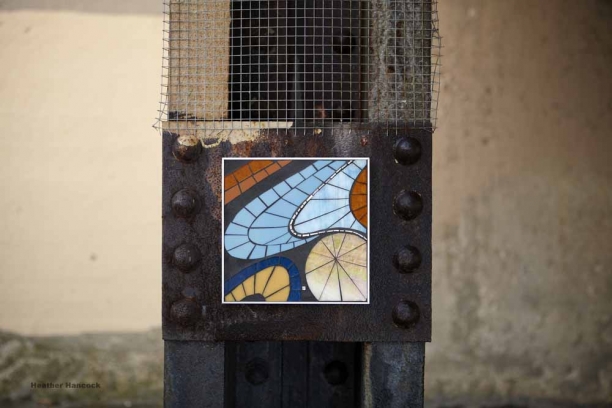I have my fuchsia and coral glass. Gorgeous! I know very little about kiln-formed glasswork so I was excited to head to Turtle Bay Glass last weekend to pick up my freshly fired pinks and corals and at the same time to get a studio tour and visit with glass artist Paul Messink. With an impeccably organized workspace filled with natural light, plenty of technical equipment and tons of glass, Paul is Exhibit A of Art Meets Science. An IT engineer by day, Paul has been working with glass for several years. I met Paul a number of years ago at an art festival in Chicago when I was first starting to exhibit my work. While I was learning the magic of glass and grout, Paul was exploring the magic of glass and heat. Keeping meticulous notes on technique, Paul has explored many different types of fused and kiln-formed glass.
Paul has mastered the technique to realize his current artistic goals which feature enchanting compositions of spare landscape imagery. Trees recede into the distance and fog with amazing perspective achieved using color, size and literal depth. The muted blues or greens or grays encased in glass contribute to the ethereal quality of the compositions. To create these pieces, Paul paints various elements of each composition onto individual layers of glass. The piece he was working on while I was there involved 6 separate layers of glass and involved precision painting of many many tiny branches with a customized paintbrush. Once all painting is complete and cured, the glass layers are fired into a single solid glass piece. The piece is fired at the target heat for a relatively short period of time (a matter of a few hours) but the cooling down or annealing is where it gets tricky. Annealing is the process of cooling glass to return it from liquid to solid state. Without proper annealing, the glass can cool unevenly. This stress can cause the glass to crack or break while in the kiln or leave it brittle, potentially breaking days, months or even years later. Bottomline: you need your kiln-form artist to be equal parts artist and engineer.
I love the contrast between permanence and ephemerality in Paul's current work: a satisfying, solid block of glass containing a floating, diaphanous world.
See the complete piece "Blue Trees" and other pieces by Paul Messink at Turtle Bay Glass.








